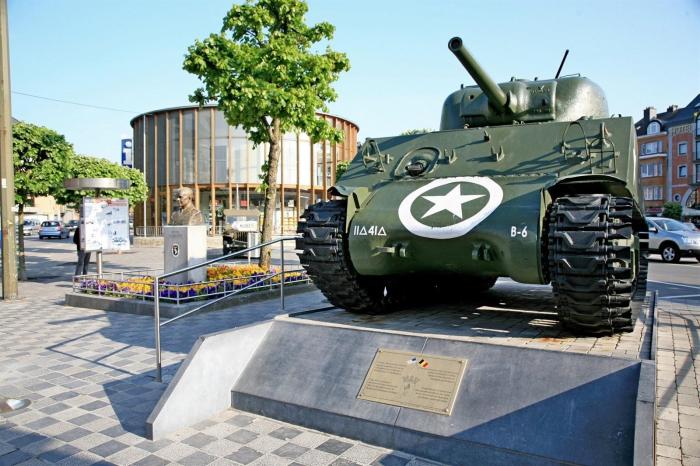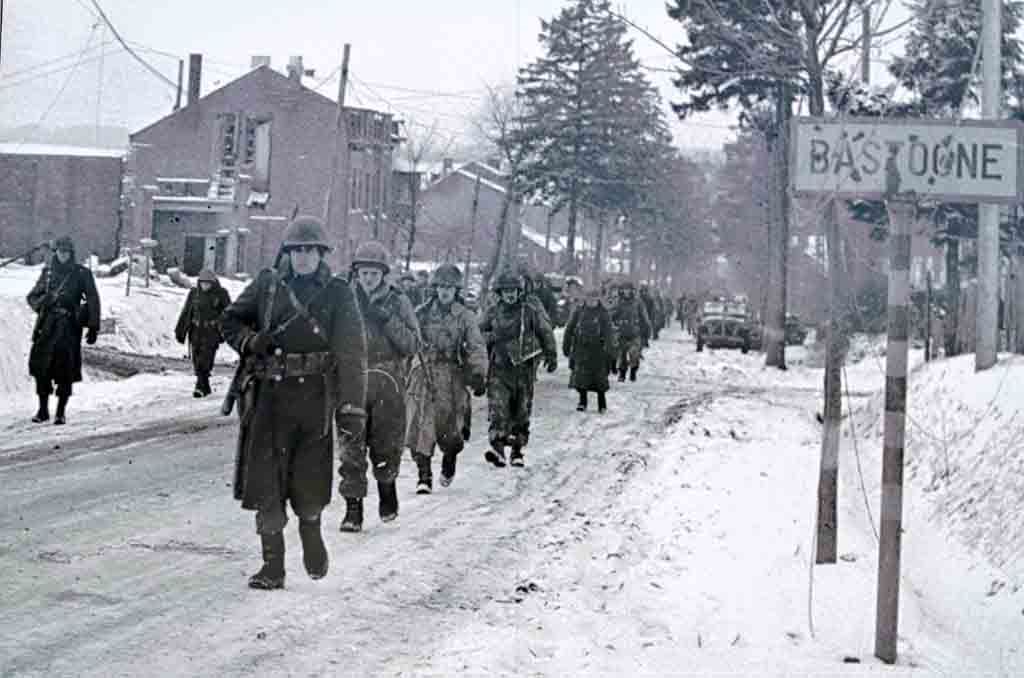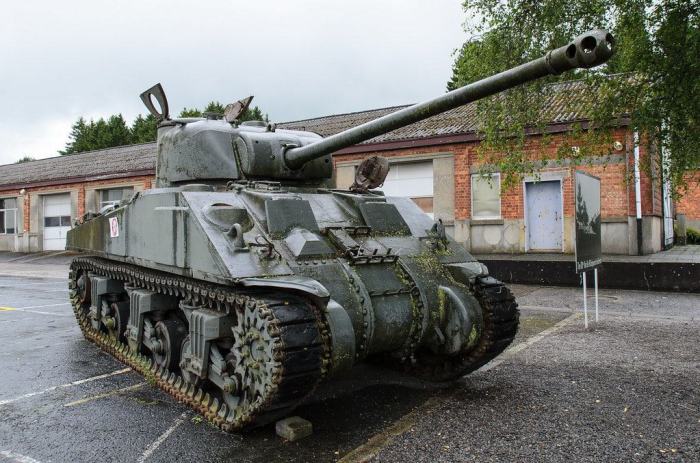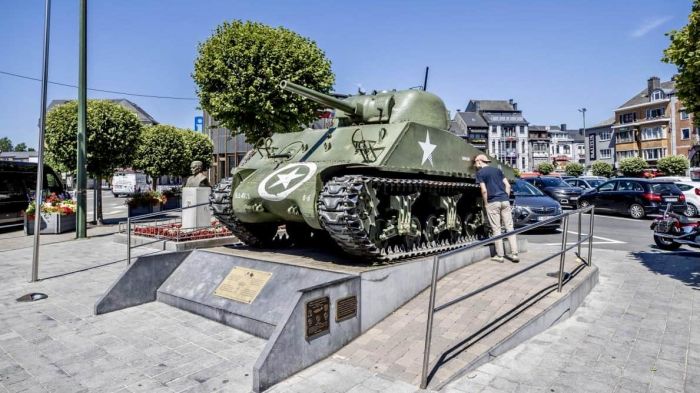Bastogne, a town forever etched in the annals of history, played a pivotal role in the outcome of World War II. Its strategic significance and the valiant defense mounted by its defenders have left an enduring legacy that continues to captivate and inspire generations.
From its humble beginnings as a small Belgian town, Bastogne found itself at the heart of one of the most critical battles of the war, the Battle of the Bulge. As German forces launched a surprise offensive in the winter of 1944, Bastogne became a key target, its capture threatening to split the Allied armies and potentially prolong the war.
Historical Significance
The Battle of Bastogne, fought from December 16 to 26, 1944, was a pivotal engagement during World War II that played a crucial role in shaping the outcome of the war.
Bastogne held strategic importance as a major road junction in eastern Belgium, controlling access to key cities like Liège, Brussels, and Antwerp. The Germans recognized its significance and aimed to capture it as part of their Ardennes Offensive, a last-ditch attempt to break through Allied lines and reach the English Channel.
Key Players
- Dwight D. Eisenhower: Supreme Allied Commander
- George S. Patton: Commander of the U.S. Third Army
- Bernard Montgomery: Commander of the British 21st Army Group
- Heinz Guderian: Commander of the German Panzer Group
- Friedrich von der Heydte: Commander of the German 1st Parachute Army
Bastogne Today

The present-day town of Bastogne is a thriving community with a population of around 15,000 people. The town has a rich history and culture, and is home to several museums and monuments that commemorate the Battle of the Bulge.
Bastogne War Museum
The Bastogne War Museum is one of the most popular tourist attractions in the town. The museum tells the story of the Battle of the Bulge, from the German offensive to the Allied counterattack. The museum has a wide variety of exhibits, including weapons, uniforms, and vehicles.
Bastogne War Remembrance Ceremony
Every year, on the third weekend of December, Bastogne hosts a War Remembrance Ceremony to commemorate the Battle of the Bulge. The ceremony includes a parade, a wreath-laying ceremony, and a speech by a guest speaker. The ceremony is a moving tribute to the soldiers who fought and died in the battle.
Cultural Impact

The Battle of Bastogne has had a profound impact on popular culture, becoming a symbol of resilience and determination in the face of adversity.
In films, the battle has been depicted in numerous productions, including “Patton” (1970), “Band of Brothers” (2001), and “Fury” (2014). These films have brought the battle to life for audiences worldwide, showcasing the courage and sacrifice of the soldiers who fought there.
Literature
The battle has also been the subject of several books, including “Bastogne: The First Eight Days” by John S. D. Eisenhower and “The Battle of the Bulge: Hitler’s Last Gamble” by Antony Beevor. These books provide a detailed account of the battle, offering insights into the strategies and experiences of those involved.
Music, Bastogne
The battle has also inspired musical works, such as “The Battle of Bastogne” by Sabaton and “Bastogne” by the Dropkick Murphys. These songs commemorate the battle and pay tribute to the soldiers who fought there.
Beyond its portrayal in popular culture, the Battle of Bastogne has influenced modern-day society in several ways. It has become a symbol of the importance of perseverance and the indomitable spirit of those who fight for what they believe in. The battle has also been used as a teaching tool, demonstrating the consequences of war and the importance of peace.
Bastogne, a city in Belgium, is renowned for its historical significance during the Battle of the Bulge. Just as the arboretum in Dallas, Texas, showcases a diverse collection of trees and plants, Bastogne’s rich history is a testament to the resilience and bravery of its people.
The city’s legacy continues to inspire visitors and locals alike, much like the beauty and tranquility found within the arboretum dallas. Bastogne remains a poignant reminder of the human spirit’s ability to overcome adversity.
Tourism and Heritage: Bastogne

Bastogne, Belgium, holds significant historical value as the site of a pivotal battle during World War II. The town’s rich war-related heritage attracts visitors from around the world, making tourism a vital aspect of its economy.
Bastogne, the site of a significant World War II battle, is a town with a rich history. If you’re interested in exploring similar historic sites, consider visiting the Atlanta BeltLine. This 22-mile loop trail encircles the city of Atlanta, connecting parks, neighborhoods, and historic landmarks.
Just like Bastogne, the Atlanta BeltLine offers a unique opportunity to delve into the past while immersing yourself in the present.
To enhance the visitor experience, the town has preserved and restored many historical sites, creating a compelling narrative of the events that unfolded during the Battle of the Bulge.
Bastogne, known for its heroic stand during the Battle of the Bulge, also has a surprising connection to the world of art. Just a short drive away is the Andy Warhol Museum , showcasing the iconic works of the Pop Art pioneer.
From vibrant silkscreens to experimental films, the museum offers a glimpse into Warhol’s transformative vision, which left an enduring mark on the art world and beyond. And so, the legacy of Bastogne, a symbol of resilience and sacrifice, intertwines with the bold and innovative spirit of Andy Warhol, enriching the cultural tapestry of this historic region.
Historical Sites
Here’s a list of key historical sites related to the Battle of Bastogne:
- Bastogne War Museum: A comprehensive museum showcasing the history of the battle, with exhibits on military equipment, uniforms, and personal stories.
- 101st Airborne Museum: Dedicated to the heroic stand of the 101st Airborne Division, the museum displays artifacts and interactive exhibits.
- McAuliffe Square: Named after General Anthony McAuliffe, the square is the site of his famous “Nuts!” response to the German surrender ultimatum.
- Bastogne Barracks: The former military barracks that served as the headquarters for the American forces during the battle.
- Mardasson Memorial: A towering monument honoring the American soldiers who fought in the Battle of the Bulge.
Walking Tour Itinerary
For a comprehensive exploration of Bastogne’s war-related landmarks, consider the following walking tour itinerary:
- Start at the Bastogne War Museum for an overview of the battle’s history.
- Proceed to the 101st Airborne Museum to delve into the role of the 101st Airborne Division.
- Visit McAuliffe Square and learn about General McAuliffe’s defiance.
- Explore the Bastogne Barracks to imagine the headquarters’ operations during the battle.
- Conclude at the Mardasson Memorial to pay homage to the fallen American soldiers.
Accommodation and Dining
To make your visit to Bastogne as comfortable as possible, here are some recommended accommodations and dining options:
- Hotels: Hotel Melba, Hotel La Grande Cure, Le Coq Hardi
- Restaurants: Le Relais Postal, Le Gourmet, Le P’tit Bistrot
Conclusion

Today, Bastogne stands as a testament to the indomitable spirit of its defenders and the enduring power of hope. Its war-related landmarks, museums, and annual remembrance ceremonies serve as poignant reminders of the sacrifices made during that fateful winter. Bastogne’s legacy continues to resonate in popular culture, inspiring countless works of art, literature, and film that pay homage to the heroism and resilience displayed during its darkest hour.
Questions and Answers
What is the significance of Bastogne in World War II?
Bastogne was a strategically important town that served as a key crossroads during the Battle of the Bulge, a major German offensive launched in the winter of 1944.
Who were the key players involved in the Battle of Bastogne?
The battle involved American forces under the command of General Anthony McAuliffe, who famously replied “Nuts!” to a German demand for surrender, and German forces led by General Hasso von Manteuffel.
What is the Bastogne War Museum?
The Bastogne War Museum is a museum dedicated to preserving the history of the Battle of the Bulge. It houses a collection of artifacts, documents, and exhibits that provide a comprehensive account of the battle and its aftermath.
When is the annual Bastogne War Remembrance Ceremony held?
The annual Bastogne War Remembrance Ceremony is held on the third weekend of December to commemorate the battle and honor the sacrifices made by the soldiers who fought there.